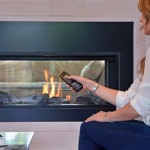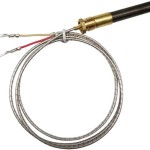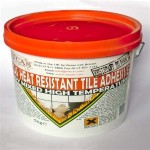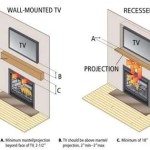Painting Faux Brick Fireplace: A Comprehensive Guide
Faux brick fireplaces offer an appealing aesthetic, mimicking the look of traditional brick without the inherent structural demands or associated costs. However, the original color or finish of a faux brick fireplace might not always align with an evolving design scheme. Painting a faux brick fireplace is a viable and relatively straightforward method to refresh its appearance and integrate it seamlessly into a home's interior. This article provides a comprehensive guide to painting a faux brick fireplace, encompassing necessary preparations, suitable materials, the painting process, and considerations for different faux brick materials.
The success of painting a faux brick fireplace hinges on proper preparation. Inadequate preparation can lead to paint adhesion issues, an uneven finish, and ultimately, a less desirable result. Conversely, meticulous attention to detail during the preparation phase ensures a durable and aesthetically pleasing outcome.
Preparation: Cleaning and Priming
The initial step involves thoroughly cleaning the faux brick surface. Dust, soot, grease, and other contaminants can impede paint adhesion. A soft-bristled brush or a vacuum cleaner attachment helps remove loose debris. For more stubborn residue, a solution of mild detergent and warm water is effective. A sponge or cloth dampened with the cleaning solution should be used to gently scrub the surface. It is crucial to avoid harsh chemicals or abrasive cleaners, as these can damage the faux brick material, particularly if it is made of a lightweight material like drywall or plaster. After cleaning, the fireplace should be allowed to dry completely, typically for at least 24 hours, to ensure adequate paint bonding.
Once the faux brick is clean and dry, priming is the next critical step. Primer acts as a bonding agent between the faux brick surface and the paint, improving adhesion and ensuring a more uniform finish. A high-quality acrylic latex primer is generally recommended for faux brick fireplaces, as it offers good adhesion and is compatible with various paint types. Oil-based primers are less common due to their higher VOC content and longer drying times. The primer should be applied evenly using a brush, roller, or sprayer. A brush is particularly useful for reaching into the crevices and indentations that are characteristic of faux brick. For larger, flatter surfaces, a roller provides faster and more even coverage. When using a sprayer, proper ventilation and protective gear are essential. One coat of primer is typically sufficient, but a second coat may be necessary for darker faux brick surfaces or if a significant color change is desired. The primer must be allowed to dry completely according to the manufacturer's instructions before proceeding to the painting stage. Proper drying time is vital for optimal paint adhesion.
Before painting, the surrounding area should be protected. This includes covering the floor with drop cloths, taping off adjacent walls and the fireplace mantel, and removing any decorative items from the vicinity. Painter's tape should be applied carefully to create clean lines and prevent paint from bleeding onto unwanted surfaces.
Selecting the Right Paint and Application Techniques
Choosing the appropriate paint is as important as the preparation. The type of paint impacts the final appearance, durability, and ease of maintenance of the painted faux brick fireplace. Acrylic latex paint is a popular choice due to its versatility, durability, and ease of cleaning. It is water-based, low in VOCs, and available in a wide range of colors and finishes. For areas around a fireplace, a paint with a heat-resistant additive is recommended, although typical interior fireplaces do not generate enough heat to require high-heat paint similar to what is used for stoves. Heat-resistant additives provide an extra layer of protection against potential discoloration or paint breakdown due to heat exposure. Matte or eggshell finishes are often preferred for faux brick, as they tend to conceal imperfections and provide a more natural, less glossy appearance. Semi-gloss or gloss finishes can be used for a more contemporary look, but they are more likely to highlight any surface irregularities.
The application process involves applying the chosen paint in thin, even coats. Multiple thin coats are preferable to a single thick coat, as they minimize the risk of drips, runs, and uneven drying. A brush and roller combination, as used with the primer, is often the most effective approach. A brush is ideal for working the paint into the mortar lines and crevices of the faux brick, ensuring complete coverage. A roller then provides a smoother finish on the raised surfaces. The painting should proceed in a systematic manner, starting from the top and working downward to prevent drips from affecting previously painted areas. Each coat of paint should be allowed to dry completely according to the manufacturer's instructions before applying the next coat. Typically, two coats of paint are sufficient to achieve full coverage and a uniform finish. However, depending on the original color of the faux brick and the desired paint color, three coats may be necessary. After the final coat of paint has dried completely, the painter's tape should be removed carefully to reveal clean, crisp edges.
Specialty painting techniques can also be employed to enhance the appearance of the painted faux brick fireplace. Dry brushing involves applying a small amount of paint to a dry brush and lightly dragging it across the surface to create a textured or distressed effect. This technique is particularly effective for highlighting the raised areas of the faux brick. Stenciling is another option for adding decorative patterns or designs to the painted surface. A stencil is applied to the faux brick, and paint is brushed or dabbed onto the exposed areas. Faux finishing techniques, such as sponging or rag rolling, can also be used to create a more textured and dimensional appearance. These techniques involve applying paint with a sponge or rag to create unique patterns and effects.
Addressing Different Types of Faux Brick and Post-Painting Considerations
Faux brick fireplaces are constructed from various materials, each requiring slightly different approaches to painting. Common materials include brick veneer, manufactured stone, and faux brick panels made from drywall or plaster. Brick veneer consists of thin slices of real brick adhered to a substrate. Painting brick veneer is similar to painting traditional brick, requiring a durable and breathable paint that can withstand temperature fluctuations and moisture. Manufactured stone, also known as cultured stone, is a lightweight concrete product that mimics the appearance of natural stone. Manufactured stone is typically more porous than brick and may require additional coats of primer and paint to achieve full coverage. Faux brick panels made from drywall or plaster are the most delicate and require extra care during preparation and painting. These panels are susceptible to water damage, so it is essential to use a low-moisture cleaning method and allow the surface to dry thoroughly before priming and painting. Lightweight paints and gentle application techniques are also recommended to avoid damaging the panels.
Once the painting is complete, it is important to allow the paint to cure fully before using the fireplace. Curing involves the paint hardening and reaching its maximum durability. The manufacturer's instructions will specify the recommended curing time, which is typically several days to a week. During this time, it is advisable to avoid touching or cleaning the painted surface. After the paint has cured, the painted faux brick fireplace can be cleaned as needed with a mild detergent and water. A soft cloth or sponge should be used to gently wipe the surface. Abrasive cleaners or scrubbing brushes should be avoided, as they can scratch or damage the paint. Regular cleaning helps maintain the appearance of the painted fireplace and prevent the buildup of dust and soot.
It's important to be aware of factors that can impact the longevity of the painted finish. Excessive heat exposure, even from a standard fireplace, can eventually lead to cracking or peeling. Regular cleaning and touch-ups can help extend the lifespan of the paint job. Also, if the faux brick material is particularly prone to moisture, consider applying a sealant after the paint has fully cured. This will provide an extra layer of protection against water damage and help prevent the paint from blistering or peeling.
Ultimately, painting a faux brick fireplace is a cost-effective and relatively simple way to update its appearance and integrate it into any existing decor. By following the steps outlined in this guide, anyone can achieve a professional-looking finish that enhances the beauty and value of their home.
How To Update A Brick Fireplace With Chalk Paint Diy Beautify Creating Beauty At Home

If You Re Going To Make It Better Fake Diy Brick Fireplace

How To Update A Brick Fireplace With Chalk Paint Diy Beautify Creating Beauty At Home

How To Update A Brick Fireplace With Chalk Paint Diy Beautify Creating Beauty At Home

Our Diy Faux Brick Fireplace Re Decor More

Faux Painted Brick Over White Fireplace Remodelaholic

Painting Brick Fireplace From White To Beautiful Brownstone Pretty Handy Girl

How To Paint A Brick Fireplace And The Best Use Craftivity Designs
How To Update A Brick Fireplace With Chalk Paint Diy Beautify Creating Beauty At Home

If You Re Going To Make It Better Fake Diy Brick Fireplace
Related Posts








